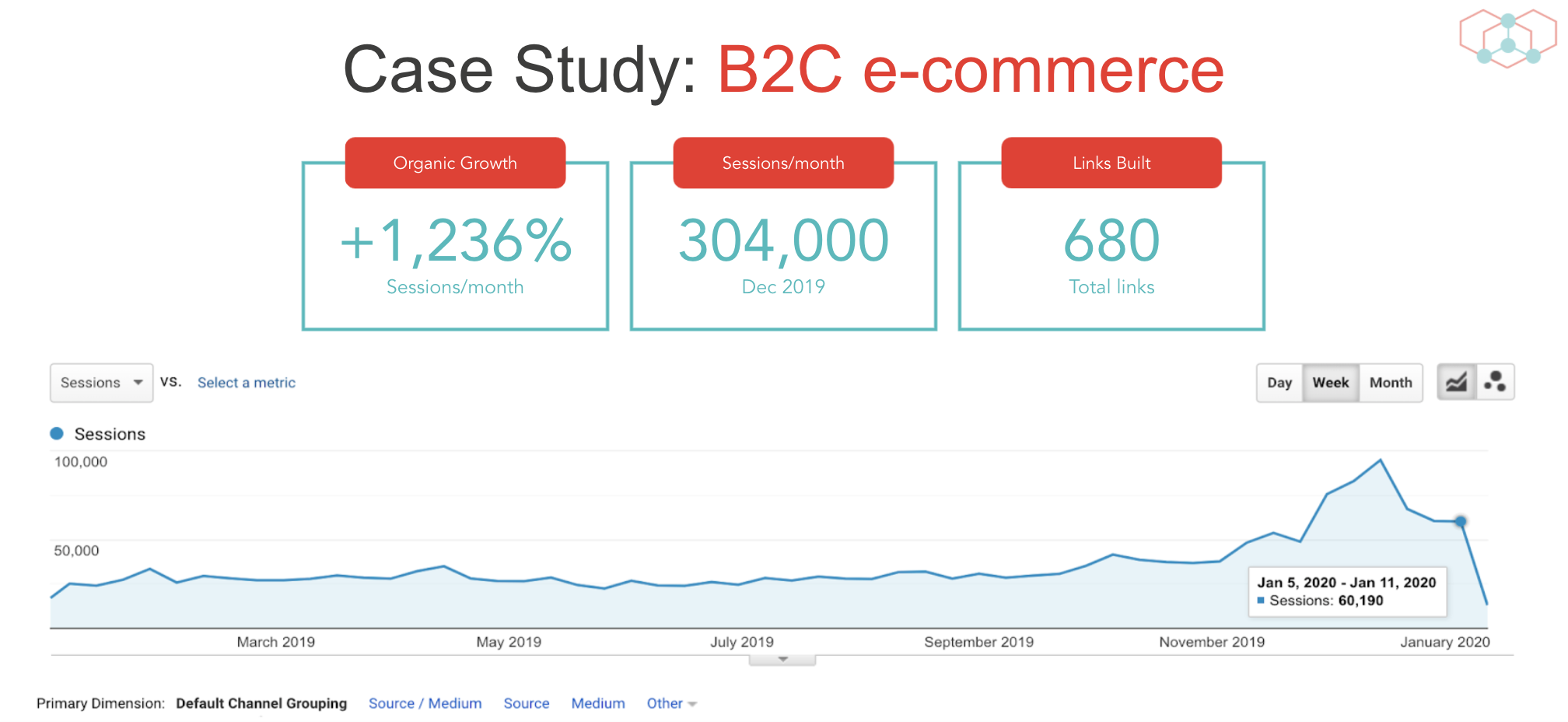How to evaluate a site for “quality” is among the most misunderstood concepts in SEO.
Getting this wrong can result in you leaving sites out of your outreach that can drive traffic – or worse, including sites that will provide no value or potentially hurt your SEO performance.
On May 26, I moderated a sponsored Search Engine Journal webinar presented by Kevin Rowe, Founder and CEO of PureLinq.
Rowe covered what website elements need to be evaluated in order to determine “site quality” for link building.
Here’s a recap of the webinar presentation.

Link building runs the gamut from strategy to analysis and reporting.

One area that is not talked about enough is how to evaluate prospective sites and why it matters.
Google Penguin specifically targeted link schemes so link builders should be conscious of which types of links are risky.
Evaluating Link Prospects: Key Elements
When reviewing websites for link building, consider the following elements:
- Content: Written and visual content for blogs, main site content, etc.
- Admin: Do they have advertising and what are the policies?
- Link Profile: What do the links pointing to the site look like?
- Authorship: Who is responsible for the main content and support content?
- Reputation: Does the authorship have any reputation?
- Technical: How do users find and engage with the content/site?
Using this framework for assessing prospects, the PureLinq team helped a B2C ecommerce client increase their monthly organic traffic by 1,236%.

Should You Listen to Google’s Advice on Links?
Over the years, Google and its representatives have confirmed the negative impact of link schemes in search rankings.
Google offers several pieces of advice on the topic:
- Google Search Console’s help documentation on link schemes.
- Google’s search quality raters guidelines.
- Google representatives such as John Mueller.
That said, relying on Google’s advice can pose challenges to your link building program.
For instance, Google’s guidelines on link schemes are ambiguous.
But Google can’t interpret intent, at least when it comes to links.
For the most part, they don’t know whether you went out and got a natural, high-quality link for the purposes of you improving the readers’ experience or if your secondary goal is to drive organic ranking.
And then there’s Google’s perennial warning against guest posting for links.
Mueller has stated that Google’s algorithms are now able to catch and devalue guest post links so that they don’t help a site rank better.
The part that's problematic is the links — if you're providing the content/the links, then those links shouldn't be passing signals & should have the rel-sponsored / rel-nofollow attached. It's fine to see it as a way of reaching a broader audience.
— John Mueller is mostly not here 🐀 (@JohnMu) June 11, 2020
Mueller’s recent pronouncements that links within guest posts should be nofollowed were met by skepticism by some SEO professionals, who viewed them as too broad.
Google's recent statements about guest posts seem very broad (too broad, IMO), and it's possible that could lead to some bad enforcement, but I personally have no fear of writing for other sites and linking appropriately when I'm writing good articles for good reasons /2 #AskMoz
— Dr. Pete Meyers (@dr_pete) June 17, 2020
Strongly disagree w/ this Google rep's take (https://t.co/5yQzUeRbAg). Really? All contributions to a publication not by an author employed there should have links "nofollowed?" C'mon.
Most publications ignore this. They trust & endorse contributors or they wouldn't publish 'em.
— Rand Fishkin (@randfish) June 15, 2020
On the other hand, Google’s search quality raters guidelines are not necessarily meant to guide your link building but it gives you a good idea of what Google thinks is relevant in terms of content quality.
Google’s Ben Gomes said in a 2018 interview with CNBC that:
“You can view the rater guidelines as where we want the search algorithm to go.”
“They don’t tell you how the algorithm is ranking results, but they fundamentally show what the algorithm should do.”
All of this simply means that SEO professionals shouldn’t just be looking into Google’s stance for all the answers.
We need to come up with our own interpretations.
Metrics vs. Quality
Identifying metrics and quality can help set you up for link building success.
Metrics
Aira’s State of Link Building survey reports on how people measure and report on link building activity.
These metrics include some of the proprietary metrics of top SEO tools including:
- Moz’s Domain Authority.
- Ahrefs’ Domain Rating.
- Moz’s Page Authority.
- Majestic’s Trust Flow.
- SEMrush’s Authority Score.
- Majestic’s Citation Flow.
- Verve’s Link Score.
Looking at these metrics doesn’t replace your own manual research.
You need a much deeper analysis of your prospects as well.
Quality
Google’s search quality raters guidelines have a section for Overall Page Quality Rating that you can also adopt.

This system can help you cover:
- Content purpose.
- Content depth.
- Credible sources.
Because of the lack of comprehensive quality metrics for link building, the PureLinq team developed their own scoring system, PureGrade, a site’s quality and likelihood of having a positive impact on organic ranking.
The score is based on automated footprints and manual review of a site’s content.
How to Analyze a Site: Keys to a Great Assessment
Again, as you evaluate potential linking partners, it’s essential to look at the following elements:
- Content
- Admin
- Link Profile
- Authorship
- Reputation
- Technical
As you go through the process, make sure to:
- Weight Each Element: Some aspects of the site are more important than others.
- Build a Footprint Not Just One Element: Examine multiple elements then decide if the site’s quality.
Here are the key things to consider during your assessment:
Content
- Commercial Links: Links to money pages not tagged with nofollow or sponsor.
- Navigation: Is it way too general for a blog?
- No-no Keywords: Keywords related to gambling, porn, and payday loans.
- Frequency: Posts are infrequent or old.
Admin
- About Us: Links to money pages.
- Admin Pages: Advertising, guest posts.
- Info: Phone, address, email
For this component, watch out for websites that directly advertise “dofollow” links in guest posts.
Google claims they can algorithmically figure out these types of link buying schemes.
Avoid such websites at all costs.
Link Profile
- Excessive Links: Too many links pointing to one page.
- Low Authority: Use DA or DR to figure this out.
- Non-Relevant Links: Links don’t make sense for the page.
Authorship
- Names & Bylines: Is the byline set to admin or the site name?
- Author Page: Is there non-existent information about the author?
- Foreign: Is the author from your target country or not?
For Your Money or Your Life (YMYL) pages, you have to be a lot more stringent on your review.
Find the website’s authors and make sure they’re reputable.
Reputation
- Presence: Does the website have a social media presence?
- Following: What types of accounts are following the brand?
- Engagement: Do they have engagement?
Technical
- Indexed: Does the website exist in Google’s index with more than the homepage?
- Geo: What is the focus of the audience’s country?
- Page Engagement: Does the site have ads, layout, and linking within a page?
[Slides] How to Identify Site Quality for Link Building
Check out the SlideShare below.
More Resources:
- E-A-T & Link Building: A Guide to Evaluating Prospects (Search Engine Journal)
- E-A-T & Link Building (PureLinq)
- Ecommerce Marketing: The Definitive Guide (Search Engine Journal)
Join Us For Our Next Webinar!
The Data Reveals: What It Takes To Win In AI Search
Register now to learn how to stay away from modern SEO strategies that don’t work.
Image Credits
All screenshots taken by author, June 2021


